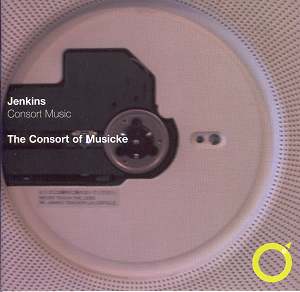For someone as long-lived
as John Jenkins, we know remarkably
little about his early life and his
training. His life spanned four reigns
plus Cromwell’s Commonwealth. He was
probably the son of a Maidstone cabinet-maker,
but his father left some eleven musical
instruments in his will so music was
somehow in the air. In the absence of
any further concrete evidence, it is
supposed that Jenkins was placed as
an apprentice to a musician resident
in the household of a gentleman.
A connection to the
gentry would be important for much of
Jenkins’ life. He played for Charles
I and had a court appointment under
Charles II, but would have been over
seventy when Charles II was restored.
Not surprisingly he spent much of his
later life living with various aristocratic
supporters in East Anglia. This was
also where he spent the interregnum,
providing music for a Catholic family
who were intent on keeping their heads
down.
Much of his music was
written to be played in the great houses.
These are not works written for the
concert hall, but the players must have
had some considerable expertise. A thread
that goes through many of the pieces,
is the rhythmic interest in melodic
lines and the sheer trickiness of Jenkins’
writing.
This selection of his
music, originally recorded in 1981,
provides examples of his writing for
three types of ensemble. First of all
comes the music for viol consorts, Fantasias
and In Nomines for 6, 5 and 4-part viol
consorts. This is seriously satisfying
music, lively but not too showy in which
you can imagine Jenkins and his fellow
players taking pleasure in its almost
conversational give-and-take.
Not all Jenkins’ writing
was serious. He wrote a significant
number of dance-inspired lighter pieces.
Here we also see another change to Jenkins’
style, the gradual replacement of treble
viols by violins. In his scores Jenkins
gives the option of playing the upper
parts on viol or violin. In these cases
the Consort of Musicke choose violins.
The Fantasias developed
into Fantasy Suites, usually three movement
works where the opening Fantasia is
followed by two dance-inspired movements
and featuring a significant role for
the organ. These suites were influenced
by the example of Coprario, but whereas
Coprario’s writing is eminently suitable
for the violin, Jenkins writes his upper
parts in such a way as to make it possible
to play them on violin or viol.
His final Fantasy Suites
for two violins, two bass viols and
continuo, a set of eight represented
on this disc by Fantasy Suite no. 1
in G minor, probably represent his swansong.
Though as with many of Jenkins’ works,
exact dating is difficult.
I am a little confused
as to who is playing what on this disc.
The track-listing omits to say for which
instrumental grouping the works were
written. You must comb the article in
the CD booklet to find this information.
This article also states "On
this recording the violin is used for
all optional treble parts"
without making clear which works this
applies to, which is not terribly helpful.
All the information is there in the
booklet, but not in a form easily digestible
by the listener. Still, that is really
a small niggle.
Naxos have deleted
their disc of Jenkins’ consorts so anyone
wanting to explore this fascinating
but neglected composer must look further
afield. The performances on this disc
do not show their age and represent
music-making of a high order. I could
imagine the viol consorts being played
with darker textures, here the players
keep the lines light and beautifully
shaped and articulated. This disc is
available at mid-price, a bit more than
the Naxos disc, but certainly worth
considering.
Robert Hugill
The
Explore Catalogue


